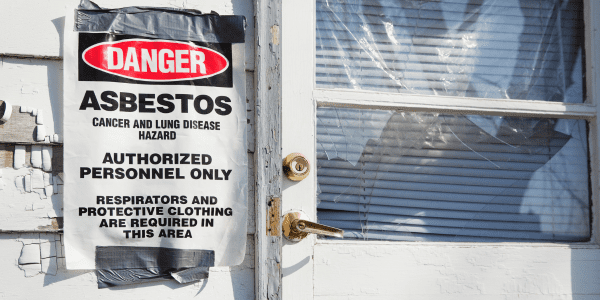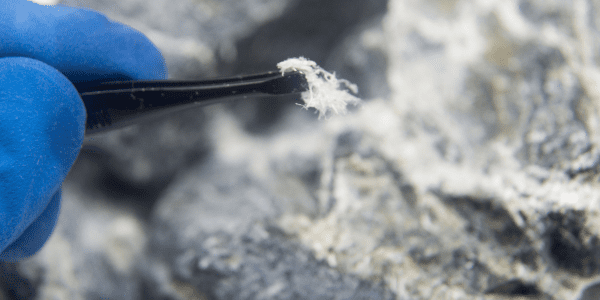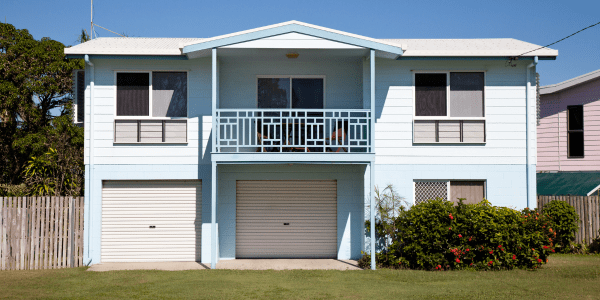What Every Homebuyer in Brisbane Needs to Know About Asbestos
Top Tips From an Asbestos Testing Inspector
Asbestos is a common concern for homebuyers in Queensland. This naturally occurring mineral was once widely used in building materials for its fire-resistant and insulating properties. However, asbestos is now known to be a hazardous material that can cause serious health risks when its fibers are released into the air and inhaled. For this reason, it is essential for homebuyers and homeowners to be aware of the potential presence of asbestos in their properties and to undergo professional asbestos testing to ensure their safety.
Understanding the Risks Associated with Asbestos in Homes
Asbestos exposure poses significant health risks. Most notably lung cancer, mesothelial tumors and asbestosis, conditions that manifest long after initial contact with asbestos fibers. These health risks underscore the importance of conducting professional asbestos testing in Brisbane homes. Particularly, where the prevalence of older homes increases the likelihood of asbestos presence.
Engaging in professional asbestos testing allows homeowners and potential buyers to assess the risk accurately. Specialists in asbestos testing utilize sophisticated techniques and lab testing to detect the presence of asbestos in homes. This proactive approach helps buyers and homeowners to make informed decisions about managing or removing asbestos materials safely.
House Types Most Likely to Contain Asbestos
In Brisbane, the homes most likely to contain asbestos are those built before the 1990s. These properties were constructed during an era when asbestos usage was rampant in building materials and therefore stand at a higher risk.
Homes from this period may harbor asbestos in a variety of forms including insulation, walls, roofing materials and floor tiles. In Australia, the use of asbestos was prized for its durability and resistance to heat. Hence, its widespread application in older homes. This signifies the importance of engaging in asbestos testing if you suspect your home may contain asbestos.
Asbestos testing is generally unnecessary for new homes built from the mid 1990’s. As these homes were built with modern materials that adhere to current health and safety standards.
Identifying Potential Asbestos in Your Home
Identifying asbestos in your home requires professional testing because many building materials look like asbestos. These look-alike materials have been used since the asbestos ban, making it impossible to distinguish asbestos by sight alone. Without lab testing, inspectors and tradespeople can only say whether they suspect a material contains asbestos.
Determining if asbestos may be present in your home is done by ascertaining the date of construction. If you’re home was built between 1950 and 1990, it is likely that there will be asbestos containing materials in your home. You will find more information about locating asbestos in your home based on its construction date here.
The Process of Professional Asbestos Testing
Engaging in professional asbestos testing begins with selecting a certified inspector specializing in asbestos identification and testing. This asbestos inspector conducts a detailed survey of the property, focusing on areas most likely to contain asbestos. Such as older insulation, walls, roofing tiles, and vinyl floor tiles among others. During this initial assessment, the inspector uses their expertise to select key areas for sampling. If you are already aware of which area needs testing, be sure to tell the inspector upon booking.
The sampling process itself adheres to strict safety protocols, aiming to minimize the risk of asbestos fiber release during collection. This involves the sealing of the sampled area, precise collection of material samples, and the secure packaging of these samples to prevent any contamination or spread of fibers. These collected samples are then sent to a laboratory.
This laboratory phase is crucial as it not only confirms the existence of asbestos but also the type of asbestos. The results from this analysis provide a clear foundation for any necessary remedial actions. These actions may include management strategies or removal.
Steps to Take When Asbestos is Discovered in Your Home
If you have discovered asbestos in your home, the first thing to do is remain calm. It is important to remember that asbestos is only dangerous if it is broken and fibres are realised into the air.
The next step is to start careful planning to mitigate any potential risks and to contact an asbestos removalist. They will be able to advise on the best plan of action moving forward. The action plan depends largely on the condition and location of the asbestos-containing materials.
In some instances, encapsulation—a process where the asbestos is sealed within the material to prevent fiber release—may be deemed sufficient. Alternatively, enclosure strategies, which involve creating a physical barrier between the asbestos material and the home environment, can be utilized.
In cases where the asbestos is in poor condition, poses a significant health hazard or you’re planning on renovating, removal by certified professionals is necessary. This procedure must be carried out by licensed asbestos removalists who follow strict safety and disposal protocols. This ensures the safety of both the occupants and the environment.
If You Need to Know About Asbestos in Your Home, Book Asbestos Testing Today!
At Dedant, our inspectors are fully qualified to conduct asbestos inspections and testing. Each inspector has over 30 years of experience within the building industry, so you can trust that you're getting the best inspection.
We have been servicing Brisbane, Redland Bay, Moreton Bay, Gold Coast, the Scenic Rim, Sunshine Coast, Ipswich and Logan since 2009.
If you have any questions or would like to book, contact us on 07 3807 0122 or via our website.






